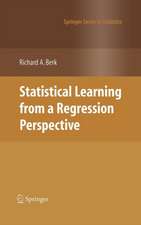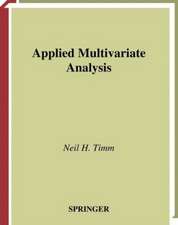Dynamics of Poverty in Rural Bangladesh
Autor Pk. Md. Motiur Rahman, Noriatsu Matsui, Yukio Ikemotoen Limba Engleză Paperback – 8 feb 2015
Efforts have been made to include the most recent research from diverse disciplines including economics, statistics, anthropology, education, health care, and vulnerability study. Specifically, findings from logistic regression analysis, polychoric principal component analysis, kernel density function, income mobility with the help of the Markov chain model, and child nutrition status from anthropometric measures have been presented.
Asset holdings and liabilities of the chronically poor as well as those of three other economic groups (the descending non-poor, the ascending poor, and the non-poor) are analyzed statistically. The degrees of vulnerability to poverty are examined by years of schooling, landholding size, gender of household head, social capital, and occupation. The multiple logistic regression model was used to identify important risk factors for a household’s vulnerability.
In 2009, some of the basic characteristics of the chronically poor were: higher percentage and number of female-headed households, higher dependency ratio, lower levels of education, fewer years of schooling, and limited employment. There was a low degree of mobility of households from one poverty status to another in the period 2004-2009, implying that the process of economic development and high economicgrowth in the macroeconomy during this time failed to improve the poverty situation in rural Bangladesh.
| Toate formatele și edițiile | Preț | Express |
|---|---|---|
| Paperback (1) | 639.41 lei 6-8 săpt. | |
| Springer – 8 feb 2015 | 639.41 lei 6-8 săpt. | |
| Hardback (1) | 644.30 lei 6-8 săpt. | |
| Springer – 3 feb 2013 | 644.30 lei 6-8 săpt. |
Preț: 639.41 lei
Preț vechi: 752.24 lei
-15% Nou
Puncte Express: 959
Preț estimativ în valută:
122.36€ • 130.84$ • 102.01£
122.36€ • 130.84$ • 102.01£
Carte tipărită la comandă
Livrare economică 18 aprilie-02 mai
Preluare comenzi: 021 569.72.76
Specificații
ISBN-13: 9784431546948
ISBN-10: 4431546944
Pagini: 276
Ilustrații: XII, 262 p. 63 illus., 15 illus. in color.
Dimensiuni: 155 x 235 x 14 mm
Greutate: 0.39 kg
Ediția:2013
Editura: Springer
Colecția Springer
Locul publicării:Tokyo, Japan
ISBN-10: 4431546944
Pagini: 276
Ilustrații: XII, 262 p. 63 illus., 15 illus. in color.
Dimensiuni: 155 x 235 x 14 mm
Greutate: 0.39 kg
Ediția:2013
Editura: Springer
Colecția Springer
Locul publicării:Tokyo, Japan
Public țintă
ResearchCuprins
Part I: Poverty Dynamics and Development1. Introduction2. Development Policies and Programs for Poverty Alleviation Part II: Demography, Mobility, and Income3. Population, Household Characteristics and Poverty4. Housing and Household Facilities5. Inter-Temporal Mobility of Poverty Status6. Distribution of Household Income7. Distribution of Household Expenditure Part III: Food and Livelihood8. Poverty and Food Security9. Livelihood Strategies and Poverty10. Changes in Access to Assets Part IV: Human & Social Capital, Health, and Women Empowerment11. Poverty and Human Capital: Literacy and Education12. Poverty, Health and Child Nutrition13. Social Capital and Shocks Coping Strategies14. Women Empowerment and Mobility Part V: Vulnerability and Poverty15. Vulnerability to Poverty: Conceptual Framework and Measurement16. Participatory Approach for Understanding Poverty Dynamics17. Poverty Dynamics and Poverty Reduction Strategies AppendixBibliography
Notă biografică
Pk. Md. Motiur Rahman
Professor
Institute of Statistical Research and Training University of Dhaka
Noriatsu Matsui
Professor
Teikyo University
Yukio Ikemoto
Professor
Institute for Advanced Studies on Asia
The University of Tokyo
Professor
Institute of Statistical Research and Training University of Dhaka
Noriatsu Matsui
Professor
Teikyo University
Yukio Ikemoto
Professor
Institute for Advanced Studies on Asia
The University of Tokyo
Textul de pe ultima copertă
The study of poverty dynamics is important for effective poverty alleviation policies because the changes in income poverty are also accompanied by changes in socioeconomic factors such as literacy, gender parity in school, health care, infant mortality, and asset holdings. In order to examine the dynamics of poverty, information from 1,212 households in 32 rural villages in Bangladesh was collected in December 2004 and December 2009. This book reports the analytical results from quantitative and qualitative surveys from the same households at two points of time, which yielded the panel data for understanding the changes in situations of poverty.
Efforts have been made to include the most recent research from diverse disciplines including economics, statistics, anthropology, education, health care, and vulnerability study. Specifically, findings from logistic regression analysis, polychoric principal component analysis, kernel density function, income mobility with the help of the Markov chain model, and child nutrition status from anthropometric measures have been presented.
Asset holdings and liabilities of the chronically poor as well as those of three other economic groups (the descending non-poor, the ascending poor, and the non-poor) are analyzed statistically. The degrees of vulnerability to poverty are examined by years of schooling, landholding size, gender of household head, social capital, and occupation. The multiple logistic regression model was used to identify important risk factors for a household’s vulnerability.
In 2009, some of the basic characteristics of the chronically poor were: higher percentage and number of female-headed households, higher dependency ratio, lower levels of education, fewer years of schooling, and limited employment. There was a low degree of mobility of households from one poverty status to another in the period 2004-2009, implying that the process of economic development and high economicgrowth in the macroeconomy during this time failed to improve the poverty situation in rural Bangladesh.
Efforts have been made to include the most recent research from diverse disciplines including economics, statistics, anthropology, education, health care, and vulnerability study. Specifically, findings from logistic regression analysis, polychoric principal component analysis, kernel density function, income mobility with the help of the Markov chain model, and child nutrition status from anthropometric measures have been presented.
Asset holdings and liabilities of the chronically poor as well as those of three other economic groups (the descending non-poor, the ascending poor, and the non-poor) are analyzed statistically. The degrees of vulnerability to poverty are examined by years of schooling, landholding size, gender of household head, social capital, and occupation. The multiple logistic regression model was used to identify important risk factors for a household’s vulnerability.
In 2009, some of the basic characteristics of the chronically poor were: higher percentage and number of female-headed households, higher dependency ratio, lower levels of education, fewer years of schooling, and limited employment. There was a low degree of mobility of households from one poverty status to another in the period 2004-2009, implying that the process of economic development and high economicgrowth in the macroeconomy during this time failed to improve the poverty situation in rural Bangladesh.
Caracteristici
Presents statistical analyses based on panel data collected from 1,212 rural households in 2004 and 2009 in Bangladesh Mobility and dynamics of poverty status, occupation, income class, and landholding are analyzed, together with other socioeconomic indicators A useful resource for understanding, explaining, and planning and implementing effective poverty alleviation policies in developing countries

















